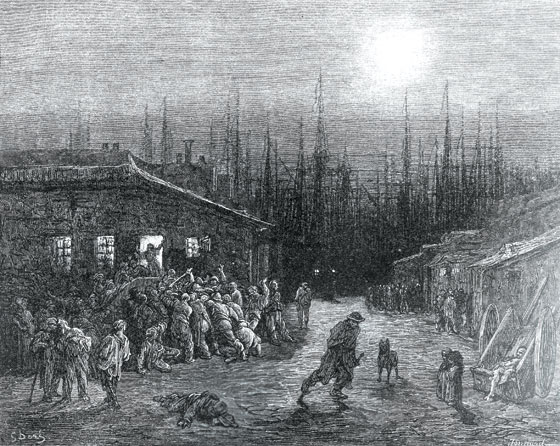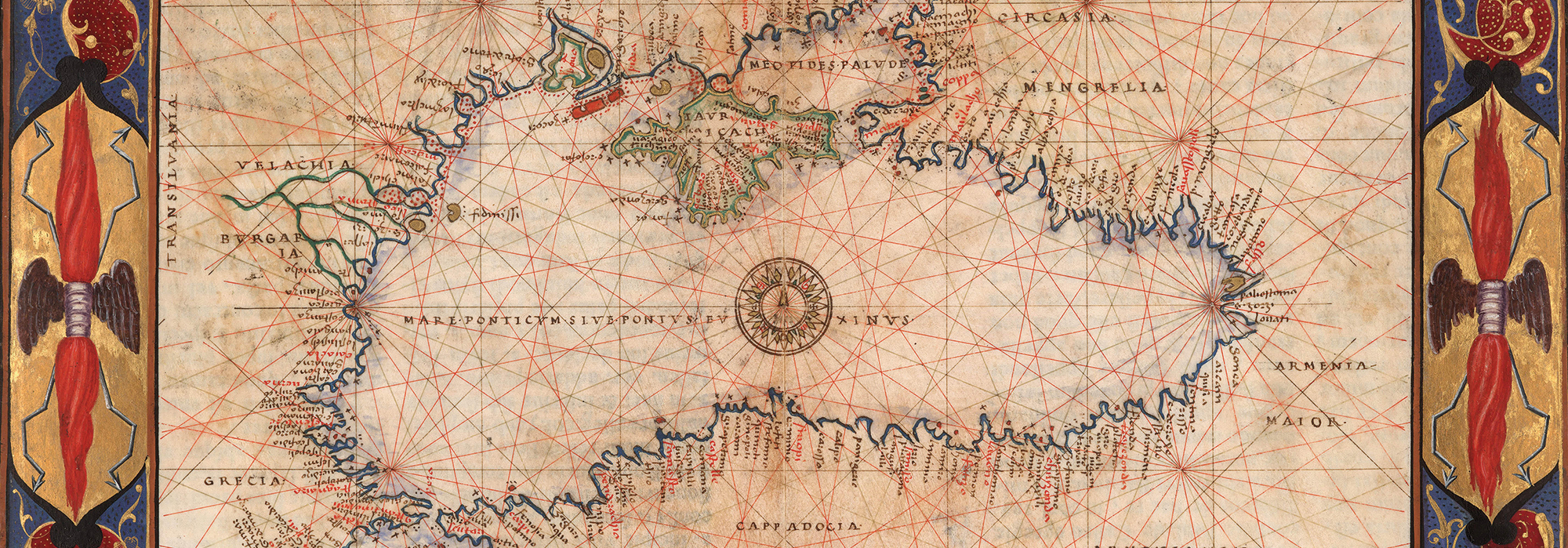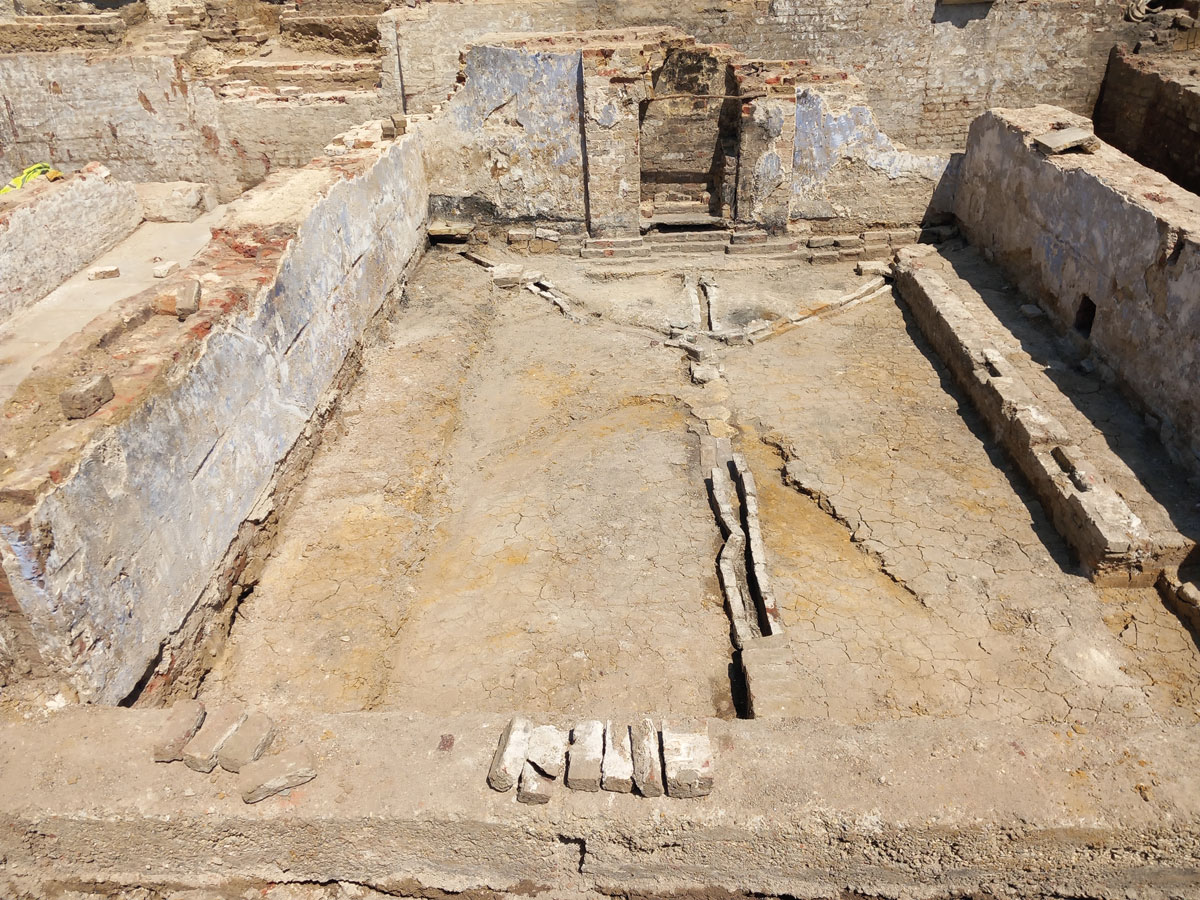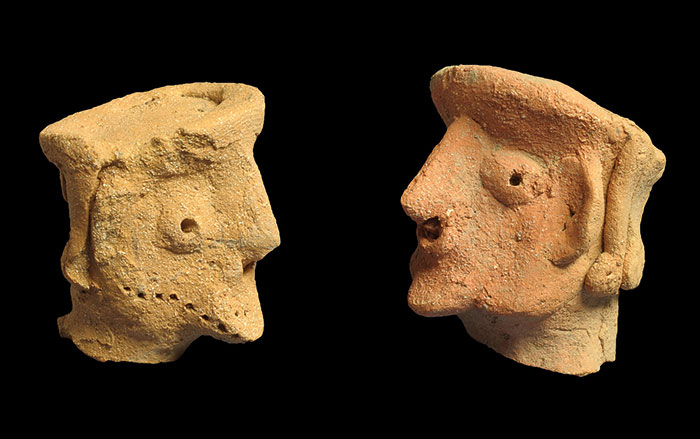
Working amid the confusion of the East India Docks in London in the early 1800s was perilous trade. In the holds of rolling ships, men could be crushed by falling barrels and chests. On deck, grappling hooks swung wildly, and carelessly loaded containers burst, sometimes showering longshoremen with toxic substances such as iodine, phosphorous, asbestos, and lead. Losing one’s footing was often a death sentence—crushed between ship and dock or drowned in the filthy Thames.
There was no shortage of men willing to take these risks. The Industrial Revolution in Britain was booming and immigrants flooded in from Ireland and the continent in search of work. Many ended up on the docks or in the factories of London’s East End. Wages were low and homes scarce—four of every five families lived in filthy single rooms. Open sewers ran down the streets and the air was clogged with soot.
Industrialization took its toll on the community’s health. Their only bulwark against frequent disease outbreaks and horrific injuries was the London Hospital. But among the very sick or seriously hurt, even admission to the hospital did little to improve chances of survival. Infection was rife on the wards and surgery was a brutal business. The standard treatment for a broken bone was amputation, and there were no anesthetics or antiseptics.
In a way, though, for such a bustling, desperate neighborhood, death often represented opportunity. Medical science was undergoing a revolution of its own, and the corpses of the recently deceased were in high demand by surgeons and medical students. Though it was illegal, there was a roaring trade in dead bodies.
Until now, little was known about exactly what nineteenth-century medical professionals did with those cadavers, or how far they were prepared to bend the rules to get them. The recent discovery of a long-forgotten cemetery on the grounds of the London Hospital is illuminating some of these practices and, while some of the details are not for the squeamish, they have much to tell us about the foundation upon which modern medicine is built.
Founded in 1740 by businessmen and philanthropists, the London Hospital was part of a new wave of voluntary hospitals that sprang up across England and North America, supported by contributions from the public. Specifically, according to original hospital records, it was intended for the sick poor among “the merchant seaman and manufacturing classes”—the population of the East End at the time.

Today the hospital (which became the Royal London Hospital in 1990) is still going strong. In 2006, an expansion necessitated archaeological excavations in two areas east of the main building. One was a known cemetery used from 1840 onward, while the other turned out to be the long-forgotten burial ground. Covering a key period in medical and social history, the puzzling remains from this cemetery have enabled archaeologists to piece together a surprising, and sometimes unsettling, portrait of the early days of modern medicine.
While the known cemetery was more or less like any other, the newly discovered one consistently produced the strange and unexpected. The excavation team, from Museum of London Archaeology (MOLA), uncovered some 262 undocumented burials, many in heavily decayed wood coffins stacked atop each other and, in some cases, filled with remains of different individuals. “Two-thirds of the coffins contained complete people, and the remainder were very incomplete people!” says MOLA’s head of osteology, Natasha Powers. “At the time we were digging,” adds MOLA’s Louise Fowler, the senior archaeologist involved in the excavation, “we didn’t know who these people were and why they had been left in such a jumble.” Almost all the bones belonged to adults, and the handful of children buried there had been left intact. However, for the unlucky disarticulated adults, their bones could end up in coffins that contained multiples of the same body part, such as elbow joints or feet. Many of the bones were covered in saw cuts, knife marks, and drill holes. “For us, piecing together these bones was a gruesome and very challenging jigsaw,” says Powers.
Documents from the hospital archives indicate that the newly uncovered cemetery was in use from around 1825 until 1841. However, the records provide no clues as to why so many people were buried in such a macabre and unusual way. “For us it was really interesting and challenging to work out who these people were,” says Powers. One of the first things that stood out about the burials was that most belonged to adult men. “This highly skewed demographic fits with the people who we suspect might have been unclaimed, probably including many dock workers, and who therefore would have been buried at the hospital,” says Powers.

Studying the location of cuts on the incomplete skeletons revealed some clear patterns. In particular, many of the bodies had consistent cuts through the vertebrae, to divide the body into three portions: head, torso, and lower body. Some of the cuts demonstrate skill and detailed knowledge of human anatomy, while others are more amateur, with slip marks and multiple attempts at making the same cut. A few of the bones had iron pins inserted into them, or sometimes traces of red dye. And some of the bones were not human but animal, belonging to dogs, cows, and even monkeys.
After cataloguing their finds, Powers and her colleagues began to understand the story behind these bones. “The location of the bones in the hospital cemetery tells us they were linked to the hospital, and the standardized patterns and distribution of cut marks tells us that these were the remains of medical school dissections and autopsies, rather than medical ‘waste,’” she explains.
Many of the bones show classic cut marks associated with autopsy, including ribs that were sawed through and skulls with craniotomies (removal of the top of the skull), all techniques that are still used in autopsies today. Other standard cuts produced joint portions for medical students to study and practice amputations—one of the most common operations at that time.
Often cut marks could be matched with the instruments used to make them. For example, only cranial saws could produce the length and serrations seen on the craniotomies, a procedure done with circular saws today. Meanwhile, round holes seen in two of the skulls would have been made by a trephine. “These were specialized drills that were narrower at the base than the top, to prevent the disc of bone slipping into the hole,” explains Jonathan Evans, an archivist at the Royal London Hospital Museum. Trephining was used on depressed skull fractures, to relieve intracranial pressure, and also to treat a range of illnesses, including epilepsy, migraines, and mental disorders.
Fine knife cuts and scratches on the bone surface are evidence of soft tissue removal—one of the first procedures the students would have learned. Lack of refrigeration meant that corpses didn’t last long, so anatomy classes were only held in the winter months and dissections were carried out in order of which tissue decomposed first. “Textbooks from the time always show medical students smoking, to cover up the terrible smell,” says Fowler.
Some bones show a steep learning curve for medical students. “We see false starts and multiple attempts at making a cut before finding the optimum location,” says Powers. In most cases, the students appear to be following the dissection instructions from early-eighteenth-century textbooks, instructions that were later illustrated in the classic Gray’s Anatomy, a book still used by medical students today. The animal bones—from dogs, horses, cows, rabbits, cats, and some exotic species, including two headless mona monkeys and two tortoises—also provide evidence of the learning process. Often, the cut marks on them were identical to those on human bones, suggesting that they may have been used in a comparative anatomy class.

The human bones with iron pins in them would have been kept as specimens, and the red staining observed on some fragments, including the remains of a preserved fetus, would have come from red wax pumped through the circulatory system to create models of the arteries and veins, another technique still used today. Other curious finds were some lead casts of an aorta. “We can’t be sure, but perhaps these could be a link to a senior doctor at the London Hospital, Archibald Billing,” says Powers. “He was very interested in trying to diagnose aortic aneurysms and these lead casts may have been his handiwork.”
Piers Mitchell, an expert on early medicine at the University of Cambridge who wasn’t involved with the project, is excited by the secret cemetery discoveries. “It is the first excavation in the United Kingdom to have recovered such a broad range of anatomical finds from the 1800s, allowing us to see which aspects of anatomical research recorded in dissection manuals of the time were actually put into practice,” he says. Furthermore, the time period covered by the cemetery straddles crucial changes in the law regarding where such research cadavers came from. Because of this, Powers and her colleagues have been able to use the bones to deduce whether the surgeons of the day respected these new regulations.
The large number of dissected skeletons indicate that the London Hospital medical school was very active at the time, but who were these people the students were experimenting on? For most, the idea of donating their bodies to medical science was abhorrent. So, prior to 1832, the only legal method for obtaining a body for dissection was to acquire that of an executed criminal, of which there were nowhere near enough to supply medical schools. The extreme shortage of cadavers created a black market for “body snatching”—digging up fresh graves and selling the corpses to medical schools through the back door.
Known as “resurrectionists” or “resurrection men,” gangs stole newly buried corpses to order. Though the practice was illegal, prosecutions for body snatching were rare. The activities of the resurrection men were certainly macabre, but many have found a dark humor in them, most recently in the 2010 black comedy Burke and Hare. William Burke and William Hare were perhaps the most notorious resurrection men; they were brought to court in Edinburgh in 1828 and found guilty of murdering 16 people and selling the corpses for dissection. Public outcry from the Burke and Hare case triggered a change in the law, granting anatomists access to the unclaimed bodies of those who died in workhouses and hospitals. Known as the Anatomy Act of 1832, it was intended to increase the legal supply of bodies for dissection and to cut off the black market. “One of the most exciting things about this cemetery is that it was in use around a decade either side of the Anatomy Act, enabling us to see if the law caused any changes in behavior,” says Powers.
Two-thirds of the graves in this cemetery were ordinary burials, clearly unexhumed. But it is possible that there had been many more ordinary burials that were then lost to the trade in cadavers. Documentary sources confirm this may have happened to many burials at London Hospital. In particular, a pamphlet published by Ann Millard, wife of William Millard, “king of the resurrection men,” provides a damning indictment. Following the capture of her husband at the London Hospital burial ground and his subsequent death in prison in 1822, she paid to have a pamphlet published to blow the whistle on the illicit trade. In it she writes, “It has long been custom to disinter the persons buried in the London hospital ground for the use of the anatomical school attached to that institution or if not required by that school for the use of anyone who was willing to purchase them.”

The hospital chaplain, Reverend William Valentine, writes in his diary entry for July 2, 1829, about a body-snatching incident: “On Monday morning some wretches had disinterred the body from the ground, but patients saw them from the ward window about 5 o’clock. The fellows left the body in a sack, partially covered, in the grounds, to the horror and disgust of all who saw it.” Ironically, the new finds suggest that many of these stolen skeletons were probably returned to the cemetery eventually—albeit in a very different state from when they were exhumed.
Comparing bones that predate the Anatomy Act with those postdating it, Powers and her colleagues have been able to assess the impact of the new legislation. A handwritten addition to the hospital bylaws on October 18, 1832, suggests that procedures were tightened, stating, “every body removed … for the purpose of anatomical examination, shall, previously to removal be placed in a decent coffin or shell and removed therein, and he shall give notice to the Chaplin, of every such removal, within six hours after it takes place.” However, the archaeological evidence suggests that these words were mere lip service. “We actually see very little change in the volume of dissections and the way they were buried, suggesting that the Anatomy Act had little impact on the practices being carried out,” says Powers.
In addition to providing a peek into the shadowy world surrounding medical training in the early nineteenth century, the excavation of the forgotten cemetery has also revealed the living conditions and lifestyle pathologies of London’s poorer classes in the East End. Some 170 of the 262 burials there contained complete skeletons. “The presence of whole and apparently untouched bodies within the excavated assemblage suggests a degree of hyperbole in Ann Millard’s account,” says Powers. These complete burials illuminate the hospital’s function as an early emergency room and show how these East Enders lived.
A report from The Times newspaper on August 11, 1806, details a typical accident that London Hospital surgeons would have had to deal with. Four drunk bricklayers fell from the rafters of the building they were working on. The paper reports, “One … was killed on the spot, and the others were taken to the London Hospital, one of whom has died since the incident, and the other two are not likely to recover.”
While definitive proof is elusive, one of the complete burials in the cemetery could have been one of the unfortunate bricklayers. The skeleton is that of a 26- to 35-year-old male with an unhealed spiral fracture of the femur. “This injury would have required considerable force and is most likely to have been caused by a fall from a height,” says Powers. A small amount of new bone growth shows that the injury was healing and that the man survived a few weeks after the accident. Broken bones were common, with over 35 percent of the complete skeletons showing signs of trauma. Such injuries often necessitated the terrifying ordeal of an amputation. “Prior to the advent of antibiotics, many severe injuries ended in amputation, to prevent the wound going gangrenous,” explains Evans.
Anesthetics were not in widespread use before the mid-1800s, so surgical patients were “bled” before operations to make them more soporific and compliant. Medical students watched proceedings from steep tiers around the wooden operating table. In one corner, a fire would be burning to heat the cauterizing irons. “Before the introduction of artery forceps, the wound would be cauterized, to stop it bleeding,” says Evans. One-quarter of the patients failed to survive their operations, and often ended up in the hospital cemetery, which now offers a record of the other lifestyle pathologies of the industrializing East End.
For example, a number of the intact male skeletons had broken noses, perhaps from fighting. “The type of nasal fractures they suffered from often results from the landing of a punch,” says Powers. Many of the men were pipe smokers, too, with 25 of the complete skeletons showing rounded grooves in their teeth, caused by perpetually clamping a clay pipe between them. The few female skeletons in the cemetery demonstrate a dedication to fashion, with 13 percent exhibiting painful bunions of the feet (probably caused by tight shoes) and two of them having tapered ribs (suggesting that they had worn tight corsets).

A London Hospital diet sheet from the late eighteenth century shows that hospital food was dire, with no vegetables at all in the meals. “Physicians had to prescribe vegetables specially,” says Evans. The menu shows a stodgy, cereal-based diet with porridge or gruel for breakfast, and broth with bread and cheese later in the day, washed down with beer. A piece of an enema kit found in the graveyard attests to the diet’s effects. Nutrition at home was poor too, as evidenced by the high levels of tooth decay (60 percent of skeletons showed signs of dental disease) and nutritional disorders such as rickets (just over 8 percent of the skeletons had the bowed legs associated with this vitamin D deficiency) and cribra orbitalia (22 percent of the skeletons had small holes in the roofs of their eye sockets, indicative of iron deficiency). Poor diet started early in life, as severe tooth decay in one of the rare examples of a young child’s skeleton demonstrates.
Patients with infectious disease were generally excluded from the hospital, but the cemetery excavations reveal that some slipped through the net. Lesions on the spines of three skeletons indicate that these patients suffered from tuberculosis—a significant killer in nineteenth-century London’s crowded communities. Given that bone changes only occur in around 5 percent of sufferers, it is likely there were many more tuberculosis cases. Six “sputum mugs” were recovered from the cemetery. Early hospital records indicate these pots were “provided in each ward to prevent them [the patients] from spitting against the walls”—possibly to help reduce the spread of tuberculosis.
The bones from the cemetery tell of hard lives, crude medical procedures, and the specter of death quietly looming. Today’s sanitized hospitals and advanced medical procedures seem a world away, but some things have been slow to change. Although the stigma associated with donating your body to medical science has gone, people still appear to be uneasy with the idea. “At Cambridge, we require about 50 donors a year and sometimes we struggle,” says Lynn Haythorpe, bequeathal secretary at Cambridge Human Anatomy Centre.
Trained medical professionals today can save many more lives than their colleagues of 200 years ago could. However, the clean, lab-coated environments and amazing medical advances we enjoy today have their roots in these grimy chapters of the Industrial Revolution. London’s sooty, crowded streets and its appalling working and living conditions provided a ready supply of unwitting subjects for medical students and professionals to experiment on and learn from. Like it or not, today’s medical science is built on the dubious and macabre activities of resurrection men and the people who purchased bodies from them. Modern medicine owes a huge debt to those dark days.











